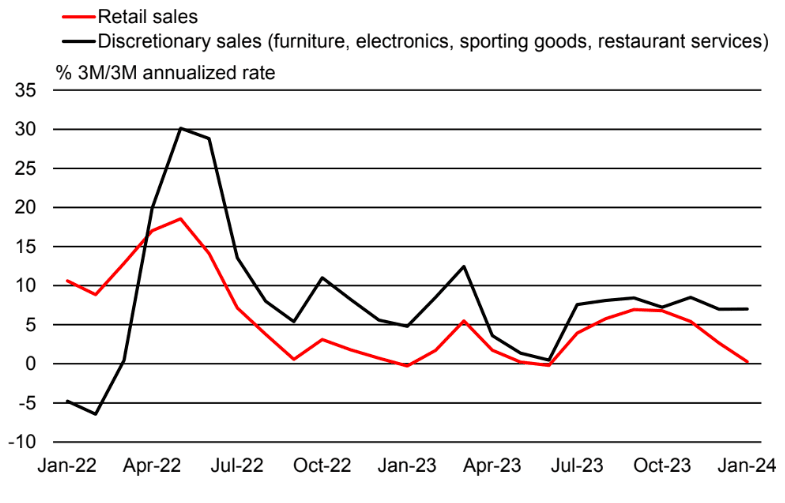Euro to Dollar 5-Day Forecast: 1.10 Still Possible, Maybe Just Not This Week
- Written by: Gary Howes
-
- EUR/USD failure on Friday a potential warning signal
- That recent rally could be due to fade
- But technicals broadly still constructive
- U.S. inflation will be week's key event

Image © European Union - European Parliament, Reproduced Under CC Licensing.
The Euro to Dollar exchange rate hit its highest level since January last week, but Friday's lower close will disappoint the 'bulls' and could hint that recent outperformance is at risk of fading.
Looking at the technical setup, the Relative Strength Index (RSI) has turned lower, having approached near-overbought conditions at 70, suggesting the potential for a pullback in the coming week.
For now, any weakness will be considered temporary in nature and classified as a consolidation, as the broader technical setup remains constructive. We tend to watch the key moving averages as indicative of where momentum lies, and Euro-Dollar resides above the 50-, 100-, and 200-day moving averages.
Above: EUR/USD at daily intervals, showing broadly constructive momentum. Track EUR and USD with your own custom rate alerts. Set Up Here
Only when the pair starts breaking below these levels will we put Euro-Dollar on alert for a broader decline.
Dominic Schnider, strategist at UBS, says EUR/USD remains positively aligned due to the Dollar's weakness; "we think a pullback of the DXY to 102–102.5 looks highly likely. This would translate into a EURUSD move to 1.10."
"The latest US macro data have been disappointing, with economic surprise indexes rolling over. We believe there’s a risk incoming US data could stay patchy. After a very strong January labor market print, we anticipate some softness for February. Employment components on the ISM side were weak, too," says Schnider.
Live EUR/USD Money Transfer Exchange Rate Checker | ||
Live Market Rate: | get quick quote | |
Corpay: | ||
Banks: Median Low | ||
Banks: Median High | ||
These data are based on the spread surveyed in a recent survey conducted for Pound Sterling Live by The Money Cloud. | ||
The key events for the Euro-Dollar in the coming week will be the release of February inflation figures on Tuesday and retail sales on Thursday.
The market looks for a CPI inflation reading of 0.4% month-on-month and 3.1% year-on-year. The core CPI figure could be more important, with 0.3% m/m and 3.7% y/y anticipated.
"As for inflation, expectations for February only point to a very slight cooling, so the risks here are more balanced versus consensus estimates. We think this will halt the retracement of US rate-cut expectations ahead of the FOMC meeting on 19–20 March," says Schneider.
Above: U.S. inflation's descent has slowed of late. Image: UniCredit.
Given the solid sell-off in the U.S. Dollar of recent days, the bigger surprise would come on an above-consensus print, as this would spoil the narrative that all signs now point to a June rate cut.
As such, expect the bigger USD reaction to be to the upside on any beat (Pound-Dollar downside). Any undershoot would allow the recent trend of depreciation to extend.
"Investors would be particularly attentive to any upside surprises from the inflation data that could prop up the USD ahead of the FOMC meeting on 20 March. Indeed, we could see the US rates markets reassessing their Fed outlook in response to a stronger inflation print yet again, boosting the USD's rate appeal," says Marinov.
Thursday's retail sales are anticipated to read at 0.5% m/m in February, and again, we imagine a bigger USD response to the upside on any above-consensus read.
Above: U.S. retail sales are tipped to pick up again. Image: UniCredit.
The Dollar enters a new week amidst renewed confidence that the Fed will cut rates in June. Indeed, a 25 basis point cut is now fully priced for June after last week's job report showed easing wage pressures.
"We're waiting to become more confident that inflation is moving sustainably to 2 per cent," Fed Chair Jerome Powell told lawmakers last week. "When we do get that confidence, and we’re not far from it, it will be appropriate to dial back the level of restriction so that we don’t drive the economy into recession."
Also, keep an eye on broader risk sentiment over the coming days as the Dollar now appears to be responding to ongoing improvements in sentiment.
"The last few weeks have seen a firm shift back towards risk sentiment being the biggest driver of USD behaviour and therefore catalysing USD weakness. With global equity markets continuing to rally, low levels of volatility across a range of asset markets, and modest signs of recovery in various global PMIs for example, there is justification for this shift," says Dominic Bunning, Head of European FX Research at HSBC.
Should markets continue to rise, anticipate the Euro-Dollar to follow suit.






